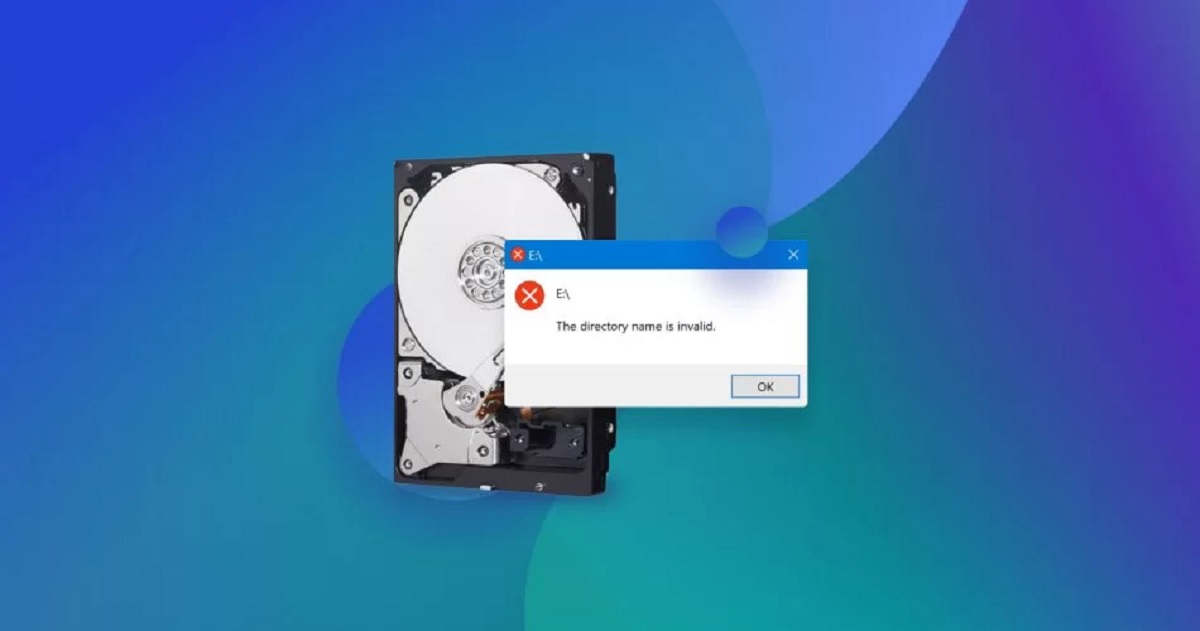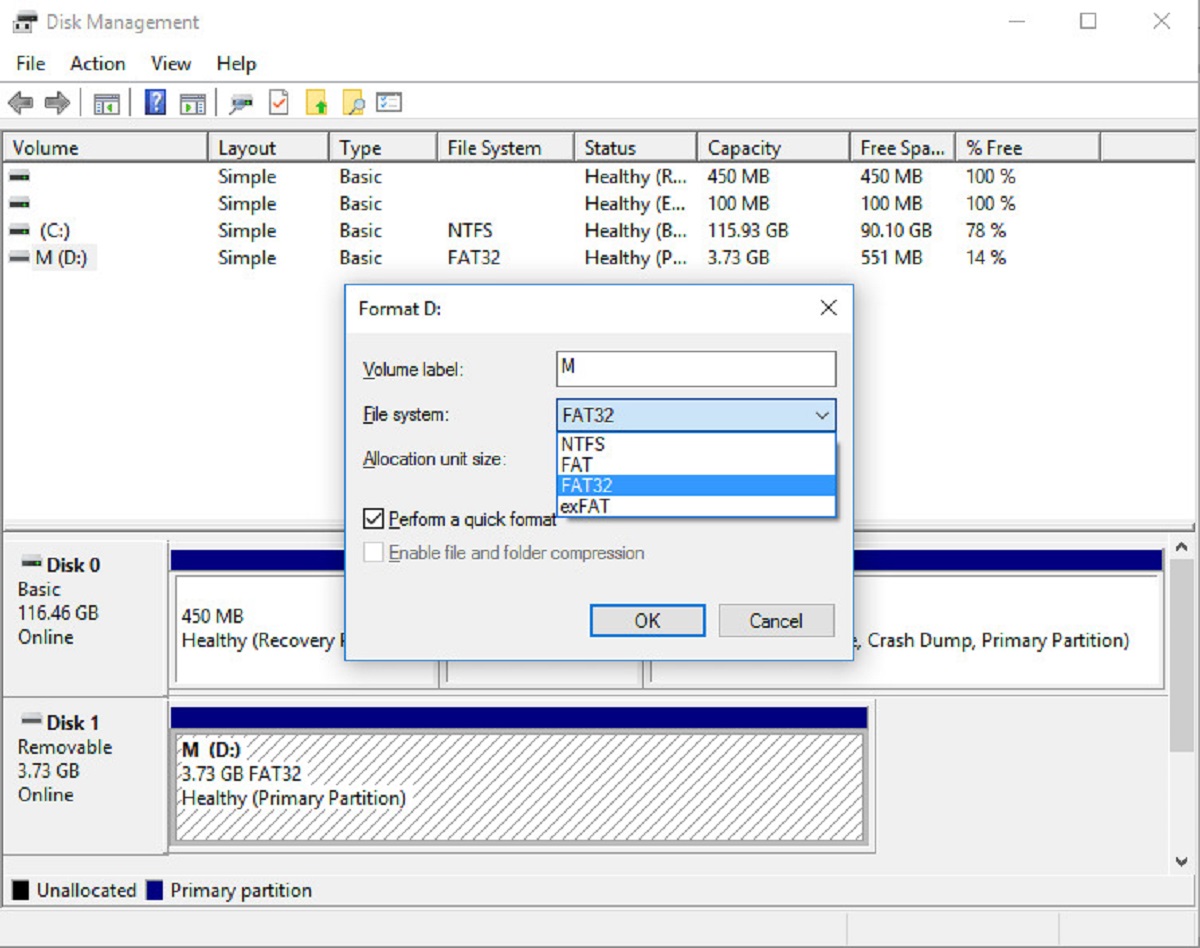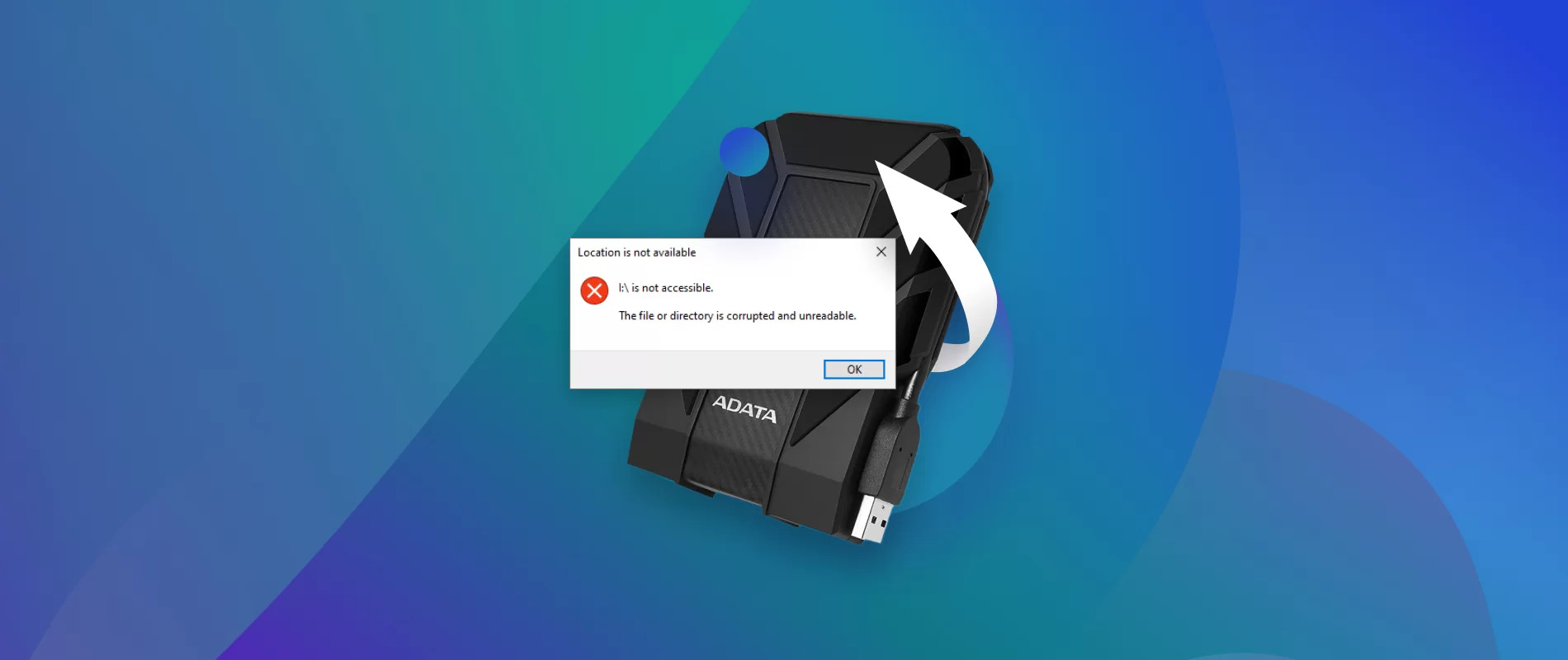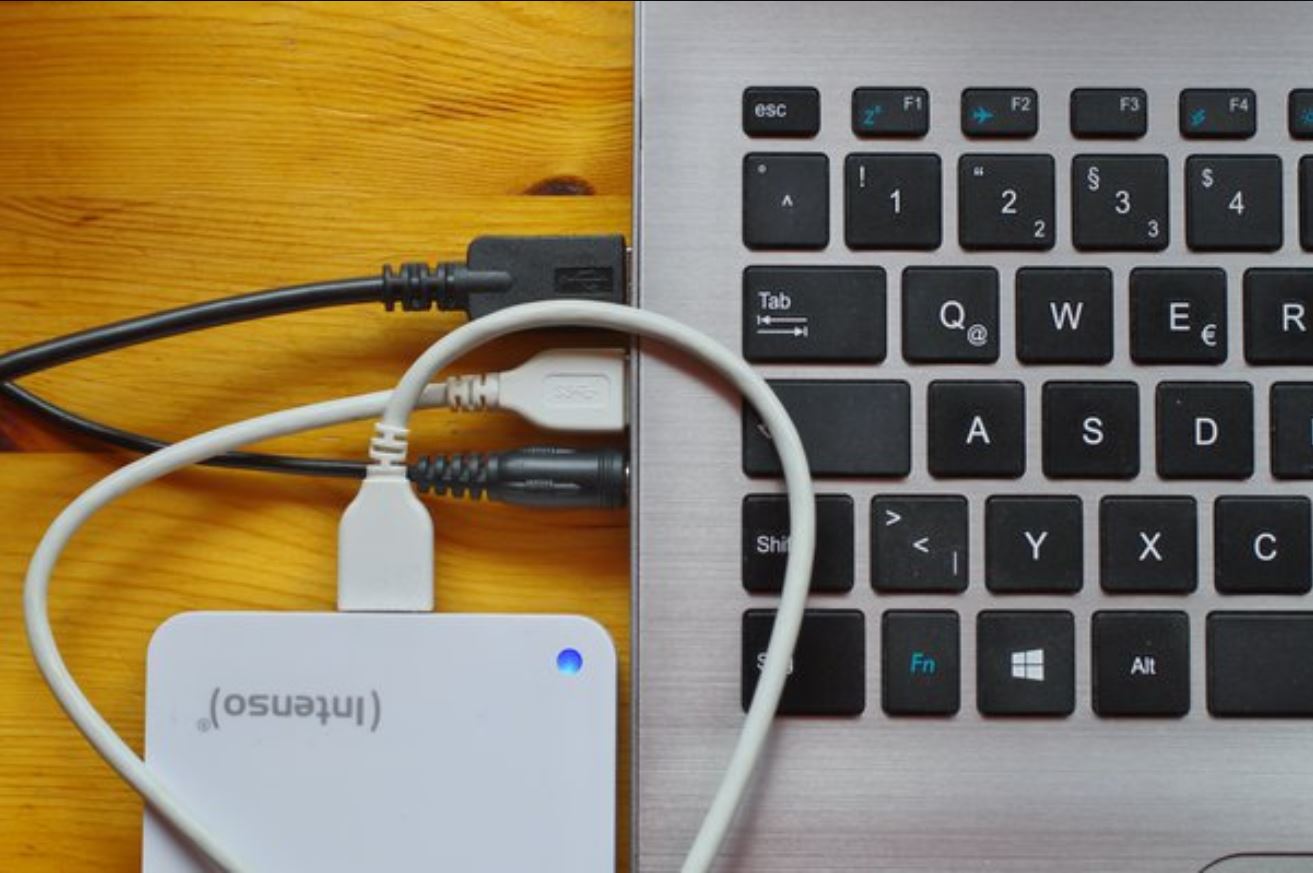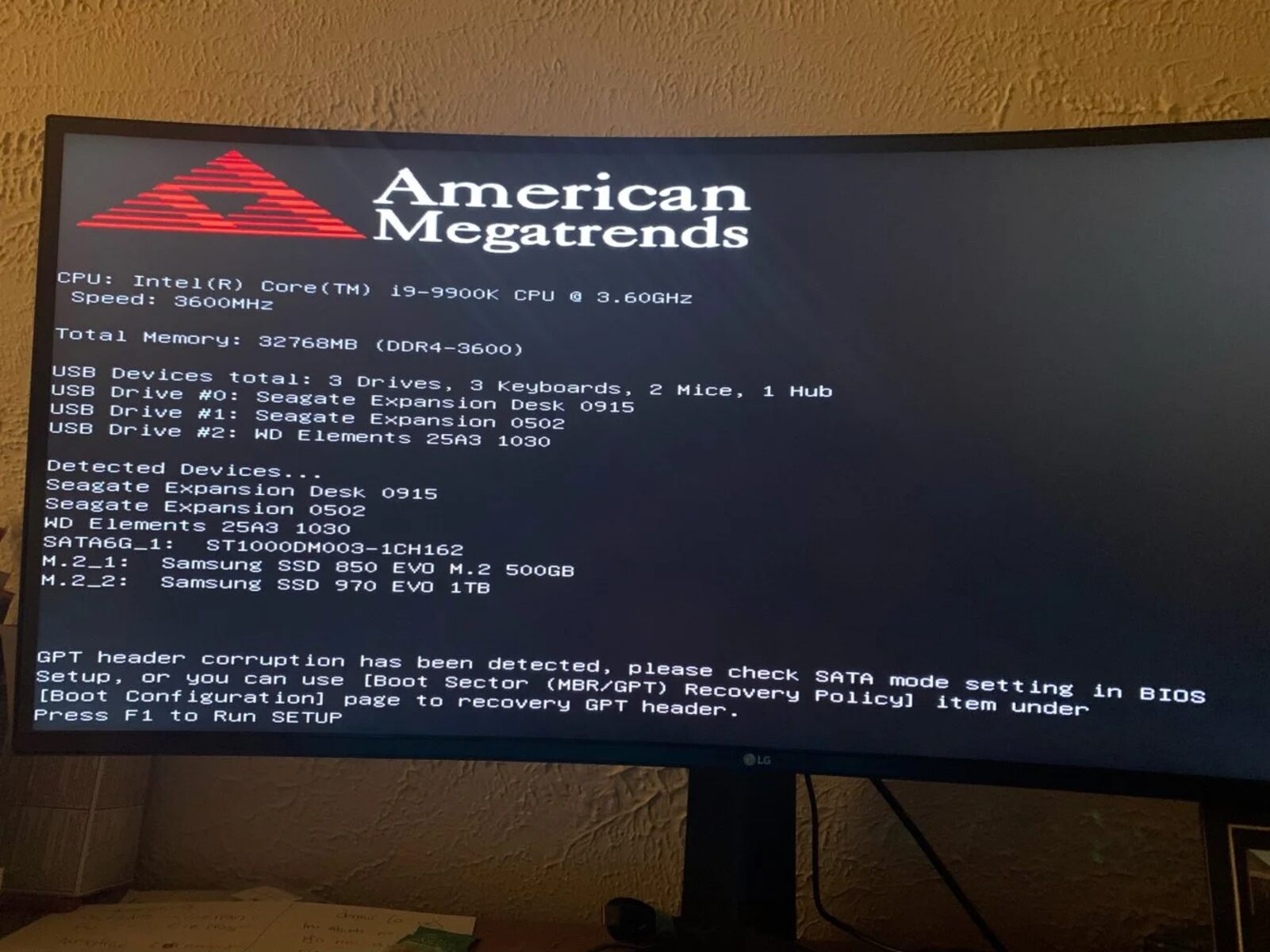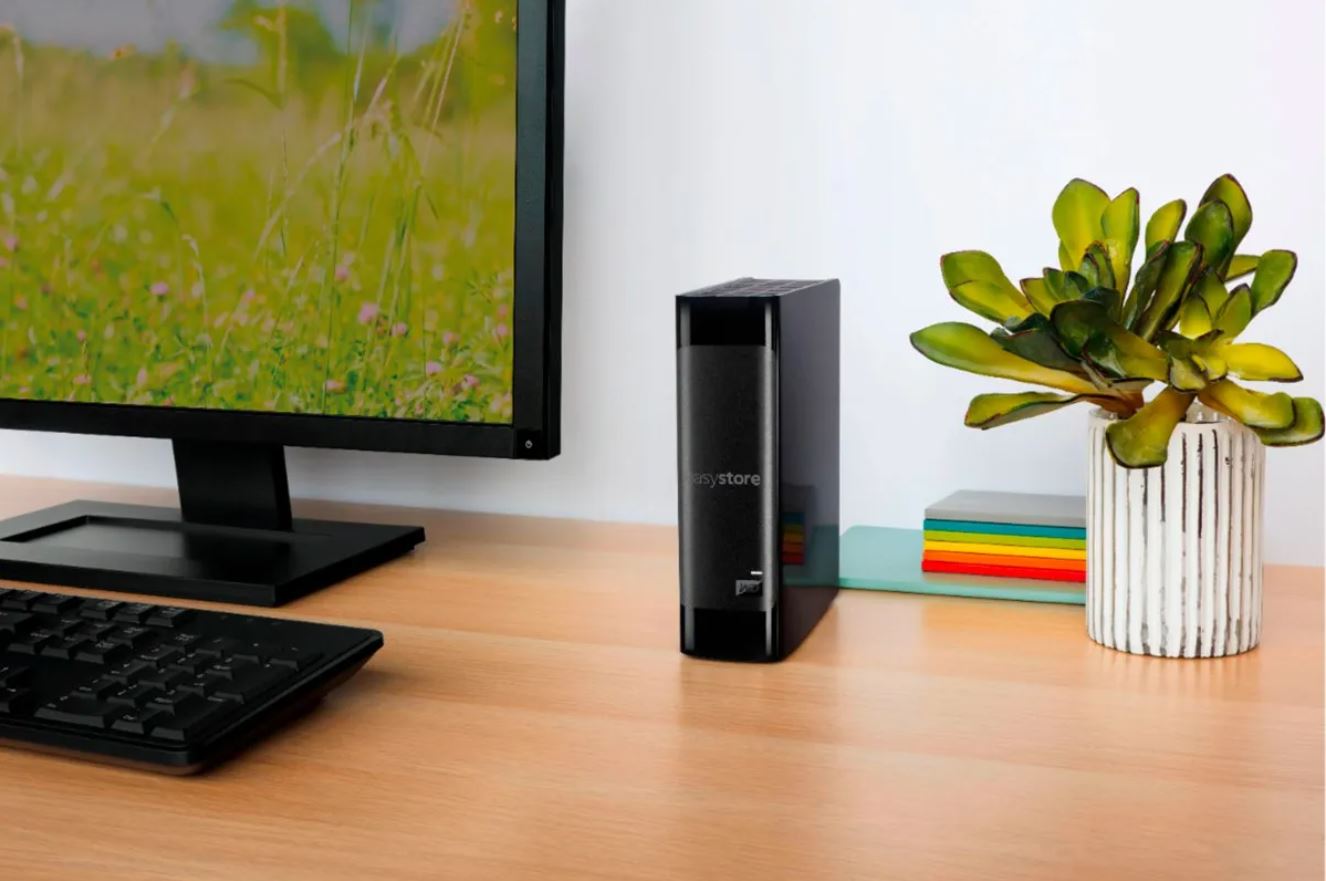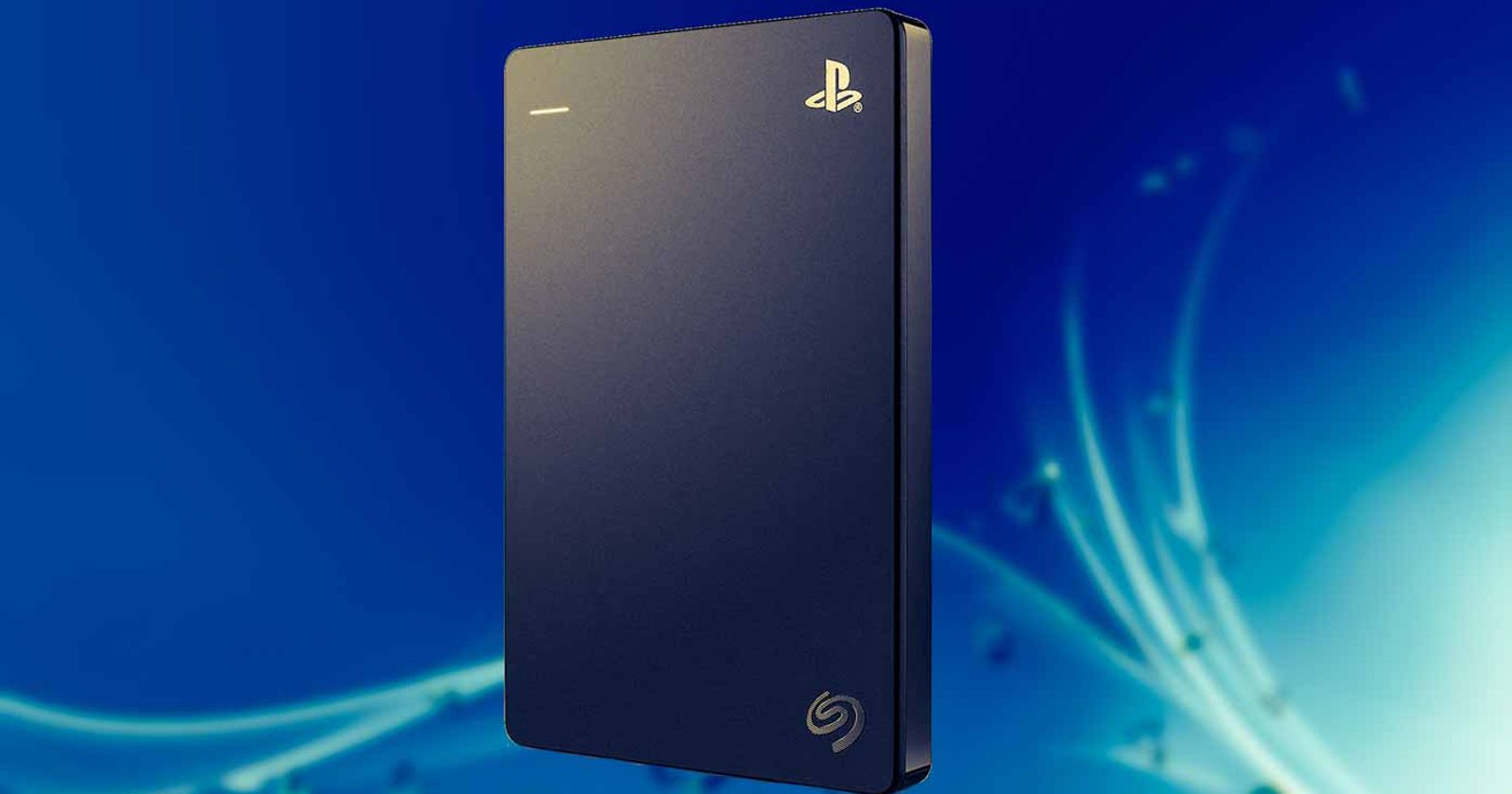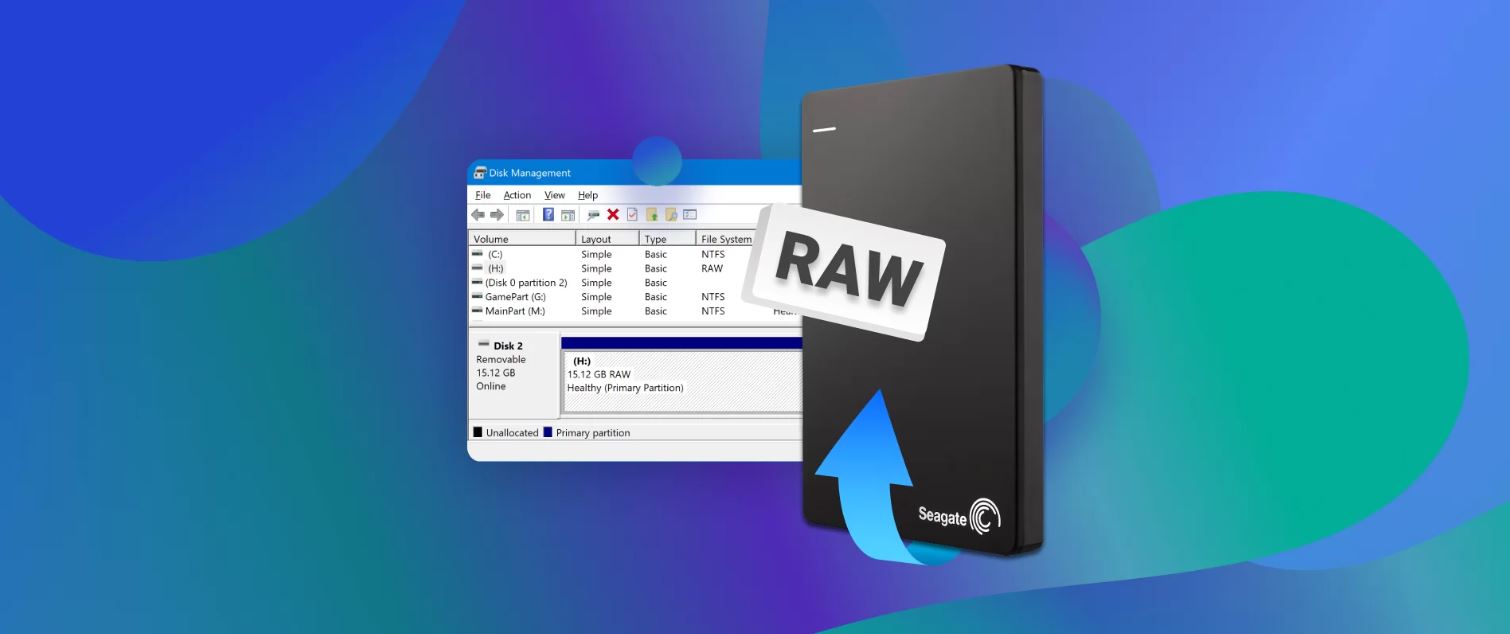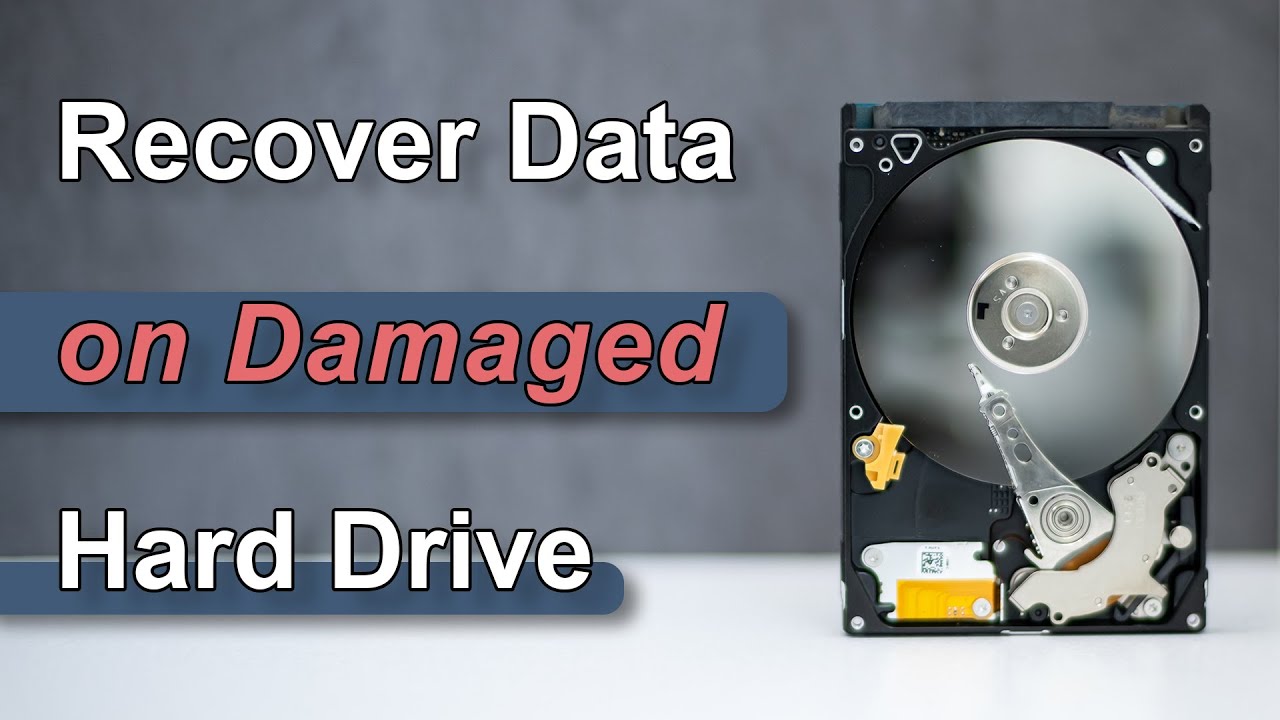Introduction
External hard drives are a convenient way to store and backup our important files. However, they are not immune to issues, and one common problem users may encounter is a corrupted and unreadable external hard drive. When this occurs, it can be frustrating and worrisome, especially if you have valuable data stored on the drive.
In this article, we will explore the signs of a corrupted external hard drive, common causes for this issue, and various methods to fix it. Whether the corruption is due to hardware malfunctions or software errors, we will provide step-by-step instructions to help you restore your external hard drive’s functionality and access your files once again.
It’s important to note that attempting to fix a corrupted external hard drive can involve some level of risk. While these methods are effective in many cases, there is a possibility that the data may not be recoverable. Therefore, it is crucial to have a backup of your important files before proceeding with any troubleshooting steps.
Now, let’s explore the signs that indicate your external hard drive may be corrupted and the causes behind this issue.
Signs of a Corrupted External Hard Drive
Recognizing the signs of a corrupted external hard drive is essential in diagnosing the problem and taking the appropriate steps to fix it. Here are the common indications that your external hard drive may be experiencing corruption:
- Unreadable or inaccessible files: When browsing through the contents of your external hard drive, you may come across files that you are unable to open or access. This can be a result of corruption within the file system or the physical components of the drive.
- File system errors: If you receive error messages indicating file system corruption when trying to access files or folders on the external hard drive, it is likely that the drive has been corrupted. These errors may include messages such as “File system is RAW” or “Disk is not formatted.”
- Slow or unresponsive performance: A corrupted external hard drive may exhibit sluggish or unresponsive behavior when interacting with files or performing tasks. This can include delays in file transfers, longer loading times, or even system freezes when accessing the drive.
- Clicking or grinding noises: Unusual noises coming from the external hard drive, such as clicking or grinding sounds, can indicate physical damage or malfunctioning components. These sounds should not be ignored, as they can contribute to data corruption and further drive deterioration.
- Unexpected drive disconnection: If your external hard drive frequently disconnects or disappears from your computer without any apparent reason, it might be due to corruption issues. This can be an indication of problems with the drive’s connectivity or internal components.
If you are experiencing one or more of these signs, it is important not to panic. There are methods and solutions available to fix a corrupted external hard drive and recover your valuable data. Understanding the causes behind external hard drive corruption can help prevent further issues in the future. Let’s explore the common causes in the next section.
Common Causes of External Hard Drive Corruption
There are several factors that can contribute to the corruption of an external hard drive. Understanding these common causes can help you take preventive measures and avoid potential data loss. Here are some of the most frequent reasons for external hard drive corruption:
- Sudden power loss: Abrupt power outages or unplugging the external hard drive without safely ejecting it can lead to file system errors and data corruption. It’s crucial to properly disconnect the drive from your computer or device before physically removing it.
- Physical damage: External hard drives are susceptible to physical damage from drops, impacts, or exposure to extreme temperatures or moisture. Damaged components can hinder the drive’s performance and result in data corruption.
- Malware and viruses: If your external hard drive becomes infected with malware or viruses, it can cause file corruption and compromise the integrity of stored data. Regularly scanning the drive with reliable antivirus software is essential for protection.
- Software or driver conflicts: Incompatible or outdated drivers, as well as conflicts with other software or programs installed on your computer, can lead to errors and corrupt the file system of the external hard drive.
- Improper ejection: Failing to eject the external hard drive correctly from your computer or device can disrupt ongoing read/write operations and result in file system errors and corruption.
- Manufacturing defects or wear and tear: Some external hard drives may have inherent manufacturing defects, while others may experience wear and tear over time. These factors can contribute to hardware failures, bad sectors, and subsequent data corruption.
Understanding the causes of external hard drive corruption can help you adopt preventive measures such as regularly backing up your data, using reliable power sources, and handling the drive with care. In the next section, we will cover the precautions you should take before attempting to fix a corrupted external hard drive.
Precautions to Take Before Attempting to Fix a Corrupted External Hard Drive
Before you embark on fixing a corrupted external hard drive, it is crucial to take certain precautions to ensure the safety of your data and the success of the recovery process. Here are some essential steps to follow:
- Create a backup: Before attempting any repair or recovery methods, it is vital to make a backup of your important files and data. This ensures that even if something goes wrong during the fixing process, you will still have a copy of your data.
- Disconnect the drive: Safely disconnect the corrupted external hard drive from your computer or device. This prevents any further damage or data loss due to accidental modifications or overwriting of files.
- Avoid additional writes: To minimize the risk of worsening the corruption and overwriting data, refrain from adding or modifying any files on the affected external hard drive until you have completed the recovery process.
- Use a separate storage device: When performing data recovery, it is recommended to save the recovered files to a different storage device instead of the same corrupted external hard drive. This helps to protect the recovered data from getting overwritten or damaged.
- Observe cleanliness: Ensure that the external hard drive and all connections are clean and free from dust or debris. Any physical obstructions can potentially cause further damage to the drive or hinder the repair process.
- Research and consult professionals: If you are unsure about the recommended repair methods or if the external hard drive holds critical data, it is wise to seek guidance from professional data recovery services. They can provide expertise and ensure the highest chances of successful recovery.
Following these precautions will help safeguard your data and ensure that you approach the repair process with the necessary care and knowledge. In the next section, we will explore different methods to fix a corrupted external hard drive.
Method 1: Run Check Disk Utility
Running the Check Disk (CHKDSK) utility is a common method used to fix file system errors and repair a corrupted external hard drive. This built-in Windows tool scans the drive for errors and attempts to fix any issues it encounters. Follow these steps to run Check Disk:
- Connect the external hard drive: Connect the corrupted external hard drive to your computer using the appropriate cable.
- Open Command Prompt: Open the Command Prompt by pressing the Windows key, typing “cmd,” and selecting the Command Prompt from the search results. Alternatively, you can press the Windows key + R, type “cmd,” and press Enter.
- Run Check Disk: In the Command Prompt window, type the following command and press Enter:
chkdsk /f X:(replace X with the drive letter assigned to your external hard drive). The /f parameter tells Check Disk to fix any errors it finds on the drive. - Allow Check Disk to run: Depending on the size and condition of the external hard drive, the Check Disk process may take some time. Allow it to complete the scanning and repair process without interrupting.
- Review the results: Once Check Disk has finished running, it will display a report of the errors found and fixed (if any). Take note of any information provided, as it can help determine the success of the repair process.
- Reconnect the external hard drive: Safely disconnect the external hard drive from your computer and reconnect it to see if the corruption issues have been resolved. Attempt to access the files to ensure everything is functioning correctly.
If running Check Disk successfully fixes the file system errors and resolves the corruption on the external hard drive, you should be able to access your files without any issues. If the problem persists or if you are still unable to recover your data, you can explore other methods such as using data recovery software or reformatting the drive, which we will discuss in the following sections.
Method 2: Use a Data Recovery Software
If running the Check Disk utility does not resolve the issues with your corrupted external hard drive or if you are unable to access your files, using a data recovery software can be an effective solution. These software applications are designed to scan the drive, recover lost or inaccessible files, and provide you with options to restore your data. Follow these steps to use a data recovery software:
- Research and choose a reliable data recovery software: There are various data recovery software options available, both free and paid. Take the time to research and select a reputable software that suits your needs and is known for its effectiveness in recovering data from external hard drives.
- Install and launch the software: Download the chosen data recovery software and install it on your computer. Launch the software once installation is complete.
- Select the external hard drive: In the data recovery software, you will typically see a list of available drives. Select the corrupted external hard drive as the target for the recovery process.
- Start the scanning process: Initiate the scanning process by clicking on the appropriate button or option in the software. The software will scan the external hard drive for lost or damaged files and display the results.
- Preview and recover the files: Once the scanning is complete, the data recovery software will present a list of recoverable files. Preview the files to ensure they are intact and select the ones you wish to recover. Choose a location on your computer or a separate storage device to save the recovered files.
- Recheck recovered files: After the recovery process is finished, double-check the recovered files on your computer to ensure they are accessible and free from any corruption. Safely disconnect the external hard drive and reconnect it to see if the issues have been resolved.
Data recovery software can be a powerful tool in retrieving your lost or corrupted files from the external hard drive. However, it’s important to note that not all files may be recoverable, especially if they have been severely damaged or overwritten. If the data recovery software does not yield satisfactory results, you may need to consider reformatting the external hard drive as a last resort.
Method 3: Reformatting the External Hard Drive
If all the previous methods fail to resolve the corruption issues on your external hard drive or if you are willing to sacrifice the data stored on the drive, reformatting the drive can be a viable solution. Reformatting erases all existing data on the drive and recreates the file system structure, essentially starting with a clean slate. Follow these steps to reformat your external hard drive:
- Backup any important data: Before proceeding with the reformatting process, make sure to back up any critical data stored on the external hard drive. This ensures that you have a copy of your files before they are permanently deleted.
- Connect the external hard drive: Connect the corrupted external hard drive to your computer using the appropriate cable.
- Open Disk Management: Open the Disk Management tool by right-clicking the Start button, selecting “Disk Management” from the context menu, or by pressing Windows key + X and choosing “Disk Management.”
- Locate your external hard drive: In the Disk Management window, locate your external hard drive in the list of drives. Take note of the disk number associated with your external hard drive.
- Format the external hard drive: Right-click on the external hard drive and select the “Format” option. Choose the desired file system format (such as NTFS or exFAT) and assign a new volume label. Click “OK” to proceed with the formatting process.
- Confirm the reformatting: Read the warning message that appears, indicating that all data on the external hard drive will be erased. Confirm your decision to reformat the drive by clicking “OK” or “Format.”
- Wait for the formatting process to complete: The formatting process may take some time, depending on the size of the external hard drive. Once the process is finished, you will receive a notification indicating successful completion.
- Reconnect the external hard drive: Safely disconnect the external hard drive from your computer and reconnect it to see if the reformatting has resolved the corruption issues. The drive should now appear as a clean, empty storage device.
Reformatting the external hard drive should only be done when you have exhausted all other recovery options or when the data on the drive is not critical. Remember to be cautious and double-check before formatting to avoid losing important files unintentionally. Following the reformatting, ensure to maintain regular backups of your data to prevent future data loss.
Additional Tips to Avoid External Hard Drive Corruption
To prevent external hard drive corruption and ensure the longevity of your valuable data, consider implementing the following tips:
- Safely eject the drive: Always eject the external hard drive properly before disconnecting it from your computer. This ensures that any ongoing read/write operations are completed, minimizing the risk of file system errors and corruption.
- Use a reliable power source: Connect your external hard drive to a stable power source to avoid abrupt power loss during data transfers. Uninterruptible Power Supply (UPS) devices can provide additional protection against power surges and blackouts.
- Handle with care: Treat your external hard drive with care. Avoid dropping, mishandling, or exposing it to extreme temperatures, moisture, or magnetic fields. Disk failures caused by physical damage can lead to data corruption.
- Scan for malware and viruses: Regularly scan your external hard drive for malware and viruses using reliable antivirus software. Infections can cause file corruption and compromise the integrity of your stored data.
- Keep the drive cool: Excessive heat can damage the internal components of an external hard drive. Ensure proper ventilation and avoid placing the drive in direct sunlight or near heat sources.
- Don’t overload the drive: Avoid filling your external hard drive to its maximum capacity. Keeping a reasonable amount of free space helps to maintain the drive’s performance and reduces the risk of file fragmentation and data corruption.
- Perform regular backups: Backing up your data regularly is essential to mitigate the impact of potential external hard drive corruption. In the event of any issues, having a recent backup ensures you can restore your files from a reliable source.
- Update firmware and drivers: Stay updated with the latest firmware and drivers for your external hard drive. Manufacturers often release updates to address bugs, improve compatibility, and enhance overall performance.
- Use a surge protector: Plugging your external hard drive into a surge protector can safeguard it against sudden power surges and fluctuations, reducing the risk of damage to the drive’s internal components.
- Regular disk maintenance: Perform regular disk maintenance tasks, such as disk cleanup and disk defragmentation. This helps optimize the external hard drive’s performance and reduces the likelihood of file system errors.
By following these tips, you can minimize the chances of external hard drive corruption and ensure the safety and accessibility of your important data. Prevention and proactive measures are key to maintaining the health and reliability of your external hard drive.
Conclusion:
Dealing with a corrupted and unreadable external hard drive can be a daunting experience, but with the right knowledge and methods, it is possible to recover your data and restore the functionality of the drive. In this article, we explored the signs of a corrupted external hard drive and discussed the common causes of such issues.
We also provided precautions to take before attempting any fixes, emphasizing the importance of backing up your data and seeking professional help when necessary. Furthermore, we outlined three methods to try: running the Check Disk utility, using data recovery software, and reformatting the external hard drive.
It is essential to note that data recovery is never guaranteed, and the success of these methods may vary depending on the severity of the corruption and the condition of the drive. Therefore, taking preventive measures, such as regularly backing up your data and following best practices, is crucial to avoid external hard drive corruption in the first place.
Remember to handle your external hard drive with care, protect it from power surges, malware, and physical damage, and maintain regular maintenance tasks to prolong its lifespan. And in the unfortunate event of data loss or corruption, don’t panic. Stay calm, follow the steps outlined in this article, and consider seeking professional assistance if needed.
With patience, caution, and the appropriate tools, you have a good chance of recovering your valuable data and getting your external hard drive back in working order.







